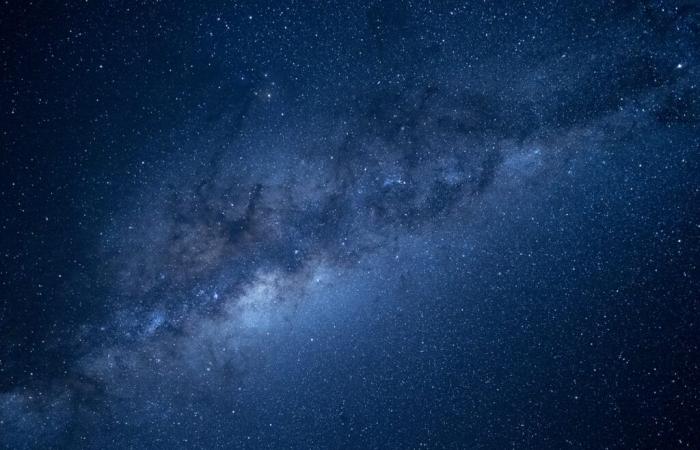Recently, an international team of astronomers made a fascinating discovery: two uniquely aligned galaxies act together as a compound gravitational lens. This rare phenomenon offers a new perspective on astronomy and could enable significant advances in our understanding of the Universe.
What is gravitational lensing?
The gravitational lens is a fascinating phenomenon that arises from the general relativity by Albert Einstein, a theory that explains how gravity works in the Universe. According to this theory, gravity is not simply a force that attracts objects, as Isaac Newton suggested. She is actually a distortion of space-time caused by the presence of masses important, such as stars, planets or even galaxies.
In other words, space-time, the structure that makes up the Universe, is not a fixed canvas. When a massive object, such as a galaxy or cluster of galaxies, is present, it creates a curvature in space-time around him, a bit like a ball placed in the center of a trampoline. This curvature influences everything around it, including light.
Light always follows the curves of space-time, which means that when light rays pass through a region of the cosmos where the gravity of a large mass is present, their trajectory is deviated. This phenomenon can be compared to the effect of a optical lenslike a magnifying glass. When light passes near a massive object (like a galaxy), this warping of space-time acts like a giant lens that bends the light and focuses it, allowing it to be see objects behind the galaxy even if they are too far away to be observed directly.
This can also produce image distortions : Astronomers can see multiple images of the same distant object, such as a quasar, that appear distorted and expanded into arcs or circles. These images can also be split into several replicas of the original object. This then creates a surprising visual effect and allows scientists to study very distant objects that would otherwise be invisible.
A compound lens: two galaxies acting together
Until now, astronomers had observed individual galaxies that acted as gravitational lenses, but these events were relatively simple to understand. Recently, however, astronomers identified two galaxies that acted together as a compound lens.
The perfect alignment of these two galaxies from our perspective creates an even more complex gravitational lens. This phenomenon occurs when two massive galaxies are positioned so that their gravity combines to distort the light of a distant object, in this case a quasar, even more markedly.
The observed system, called J1721+8842was first interpreted as the effect of a single elliptical galaxy bending the light of a quasar behind it. However, while studying the data for two years, astronomers noticed anomalies: several points of light appeared to be copies of the same light source and upon further analysis, they confirmed that these points were indeed from the same quasar. This observation led the researchers to hypothesize that two galaxies could be responsible for the lensing effect.
The crucial role of the James Webb telescope
To confirm this hypothesis, astronomers used data from the télescope spatial James Webb. This telescope, more powerful than its predecessors, allowed researchers to observe finer details and refine their model. Examining the resulting images, they then discovered a reddish ring that they initially thought was an Einstein ring, a type of light distortion typical of gravitational lenses. In reality, this ring was the signature of a second galaxy which intervened in the lensing effect.
This level of detail allowed the researchers to reconstruct a computer model that confirmed that the two gravitationally interacting galaxies created a compound gravitational lens, a very rarely observed phenomenon. This opens up new perspectives for astronomers, because a compound lens makes it possible to better study distant objects that would otherwise be impossible to analyze in detail.
A discovery with major implications
This discovery has important implications for cosmology. First of all, it offers a powerful tool for studying distant objects, such as quasars. The distortion of light makes it possible to magnify and better understand these objects located billions of light years from Earth, well beyond what current telescopes can observe directly.
Additionally, this observation could help resolve a long-standing scientific debate over the Hubble constant, a key value used to measure the expansion of the Universe. The precise alignment of two galaxies in gravitational lensing could provide new information that would allow this constant to be calculated more reliably. This would reduce uncertainties about the speed at which the cosmos is expanding.






